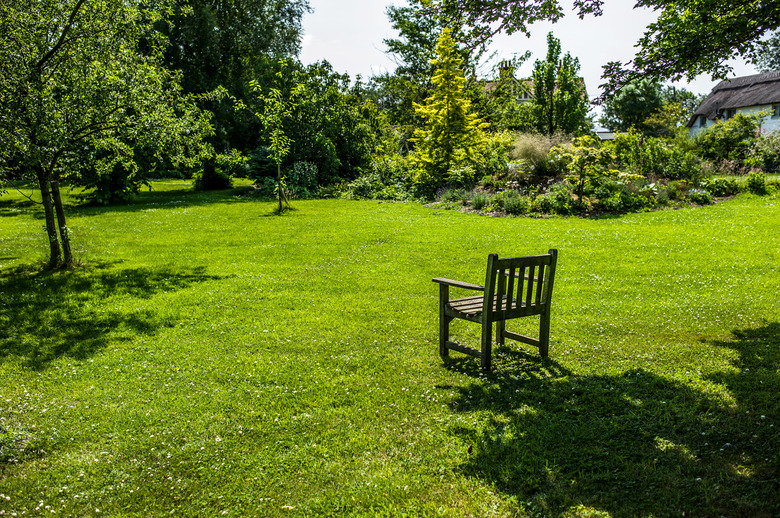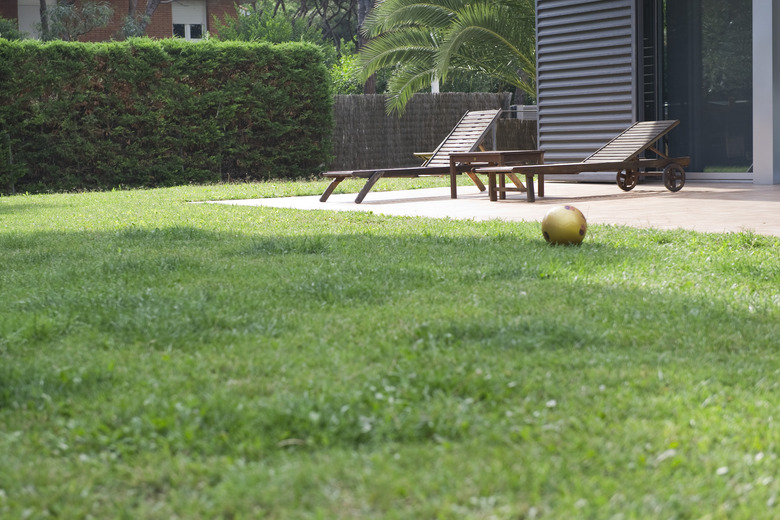Why You Should Topdress Your Lawn
We may receive a commission on purchases made from links.
Topdressing is a lawn care process that involves sprinkling and spreading a soil mixture on top of grass to improve the health of your lawn. The soil components needed to topdress a lawn vary depending on the existing soil under the grass, but the goal is the same no matter what: improving the conditions of the lawn in ways that benefit the grass, the soil, the drainage, and the feel of the lawn underfoot. Best of all, topdressing is a simple DIY lawn care project that you can complete in an afternoon.
What Does Topdressing a Lawn Mean?
What Does Topdressing a Lawn Mean?
Topdressing refers to adding organic material such as compost or peat over your lawn to improve the soil, or to adding material like sand to improve soil texture. Because you're adding to the soil rather than spraying or mixing in chemicals, topdressing also has numerous benefits that fertilizer does not, such as providing better drainage and improving the structure of the soil.
As the name implies, topdressing is just a light coating of organic matter sprinkled atop the entire yard or even just a few select areas. The topdressing material includes soil, peat, compost, sand, or often a combination of these materials. Topdressing material is available in premixed bags online or from a well-stocked garden center, but it's not difficult to make it yourself. One mixture varies from the next, so it's best to choose one that's fairly similar to the soil content in your yard.
Why Topdress a Lawn?
Why Topdress a Lawn?
Topdressing improves the soil beneath your lawn, which means it's easier for the grass to stay healthy even without additional maintenance. There are many benefits of topdressing, particularly when it's properly applied:
- It helps break down thatch quicker, contributing to a healthy and well-balanced lawn environment.
- It's also useful for a lawn that feels lumpy and uneven underfoot, filling in the low spots for a more level surface.
- Topdressing also repairs soil by improving the nutrient content that may have been thrown off balance by the overuse of fertilizers and other lawn chemicals. This in turn results in a healthier lawn with less thatch. If the thatch layer covering the soil gets too thick, such as an inch thick, it's harder for the grass to receive the oxygen it needs.
A topdressing with sand in it, unless your soil is heavy clay, helps ensure the soil gets better aeration, allowing nutrients and water to reach the roots of the grass. Applying a little topdressing every few years or as needed helps keep the soil as healthy as possible. The key is moderation; too much topdressing can actually make the thatch layer thicker or can cause issues with the grass, as it may have a hard time growing through so much new soil.
When to Topdress the Lawn
When to Topdress the Lawn
Topdressing is best done in spring after the lawn has been mowed a few times or early in autumn well before the final mowing of the season. Topdressing right after you've mowed is a good idea if your lawn feels lumpy or has low areas, as you'll have a better chance of recalling the problem zones that require the most attention.
Spot-treat minor areas once or twice a year as necessary. If you are treating the entire yard, wait two to three years before treating it again, as changing the soil composition a bit too much over time could have a detrimental effect on the lawn. Topdressing is also a good idea before overseeding bare spots in a lawn rather than after. Applying the topdressing before adding new seed ensures the seeds won't get buried under too much soil. If you keep a thin layer of topdressing, however, seeding first is also an option.
For a yard with compacted soil, apply topdressing after first aerating the lawn early in fall once the summer heat and humidity fade away. Push a core aerator, often available from local rental companies, over your yard as if mowing the lawn. This machine removes plugs of soil from the yard, resulting in holes that help water, air, and nutrients reach farther into the soil. Topdressing material loosely fills the holes, resulting in a healthier lawn and healthier soil that is no longer compacted.
How to Choose the Perfect Topdressing
How to Choose the Perfect Topdressing
The ideal topdressing blend for your lawn depends on the existing soil composition. If you've ever dug holes to plant something in your yard or garden, you probably already know its characteristics. If you are unsure about what your soil is like beneath the lawn, do the following:
- Cut a plug with a sharp knife, cutting it a bit like a slice of pie but leaving the outer "crust" area attached.
- Gently tug on the grass or lift the attached wedge out with the knife, folding it back onto the lawn. This doesn't harm the roots, so once the wedge is placed back into position, you'll never be able to tell that you've pulled it out of the ground.
- Feel the soil between your fingers to determine if it has a lot of sand in it already, if it's fairly average and crumbly or if it feels hard like clay in some areas. If it already contains a lot of sand, you won't need to add more. If the soil seems crumbly and neither sandy nor full of clay, choose or make a blend of equal parts sand, quality topsoil, and peat or a well-aged compost.
Tip
Compost may introduce weeds, so it's best not to use it unless you're relatively sure it's free of weed seeds. If your soil has a lot of clay in it, skip the sand and add organic matter such as compost or peat. A small amount of topsoil is fine to add as well.
How to Apply Topdressing
How to Apply Topdressing
1. Mow the Lawn
Mow the lawn to a short height and either bag or rake the grass clippings to remove them from the yard. This helps ensure that the topdressing gets down close to the existing lawn soil where it eventually mixes in. It also helps you locate depressions in the lawn requiring topdressing as fill.
2. Calculate How Much Topdressing You'll Need
To cover 1,000 square feet, you'll need about half a cubic yard of topdressing for a layer 1/8 inch deep or 3/4 cubic yards for a layer 1/4 inch deep. One cubic yard is almost enough to cover 1,000 square feet with a layer 3/8 inch deep.
3. Apply the Topdressing
Apply your topdressing material to the areas of the lawn that need it by tossing the soil with a shovel into the project areas. Use the back end of a garden rake to smooth the soil to a relatively uniform thickness of about 1/4 inch but not more than 1/2 inch. If you plan to topdress again within the next year or so, use the same mixture of soil components with the same approximate granule size to ensure the materials blend well with one another over time.


